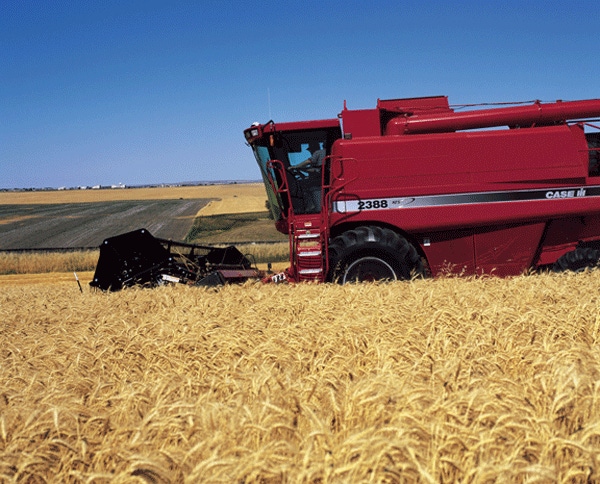October 5, 2012

To the wheat industry, China is like an elephant in the corner.
Even though it is sitting silently, it takes up the majority of the room and you cannot ignore what might happen if it does something unexpected.
China is the world’s largest producer and consumer of wheat, yet it currently plays a very minimal role in the world market. Any change would have a significant impact on the world supply and demand picture.
Current trends in China’s crop situation indicate there is growing internal competition for acres among the commodities. That begs the question: How will China’s internal competition impact the world wheat outlook?
As in the United States and many other countries, corn is significantly shaping China’s agricultural landscape. According to the U.S. Department of Agriculture (USDA), total Chinese corn consumption surpassed total wheat consumption in 1997/98 and surpassed total rice consumption in 2004/05. In the last 10 years, Chinese corn consumption increased by 57 percent while wheat and rice consumption increased 17 and 8 percent, respectively.
China’s harvested corn acres and yields are increasing to meet this new and growing demand. According to USDA, China’s corn planted area increased 43 percent since 2003/04 to an estimated 34.3 million hectares in 2012/13.
Wheat planted area increased just 10 percent during the same period to 24.3 million hectares but has remained virtually unchanged for the last seven years and fell far below the peak of more than 30.0 million hectares in the early 1990s.
If China continues to increase corn area at such a fast pace, will it be to the detriment of other commodities?
Over the past decade, total harvested area of all field crops increased; therefore, the higher corn area did not significantly siphon land from other crops. However, part of the increase is a result of double-cropping instead of expanding agricultural acres. In fact, urbanization in many regions threatens traditional agricultural land and will be an important factor in the competition for planted area going forward.
It is safe to assume there is a finite amount of viable agricultural land and at some point an increase in one crop will lead to a direct decrease in another.
Soybean production down significantly
For now, a shift in soybean production is helping to ease planted area competition. Total soybean planting is down significantly for the past three years, freeing up more than 2.0 million hectares since 2003/04.
Unlike with other commodities, China has leaned heavily on the world market to meet domestic soybean demand.
While China is projected to import less than 2.0 million metric tons (MMT) each of wheat, corn or rice in 2012/13, estimated soybean imports could reach 59.5 MMT, marking 10 consecutive years of record imports.
On average during those 10 years, Chinese imports accounted for 52 percent of total world soybean trade. Does the world market have the capacity to satisfy China’s increasing soybean demand over the next 10 years? If not, will it force China to increase soybean acres and therefore add to the acreage competition?
The rapid increase in China’s consumption of both corn and soybeans is due, in part, to a growing middle class that is already larger than the entire U.S. population. Greater disposable wealth has resulted in more animal protein in the Chinese diet, meaning larger livestock herds that require a lot more feed grain. Will wheat, and even rice for that matter, get lost in the mix?
From the outside, it is hard to imagine the government would allow that to happen. The Chinese government is most concerned with securing the food supply and keeping consumer prices manageable. Therefore, it tries to ensure that domestic production combined with reserve stocks of food grains (wheat, rice and corn) are always sufficient to meet domestic food demand.
The government uses price guarantees as an incentive for local producers to plant these food grains for a steady food supply. Conversely, the government has allowed increasing imports of soybeans to meet feed demand.
The government’s priority to preserve wheat production is evidenced by stronger price supports for wheat relative to rice in recent years.
Albeit slower than corn, Chinese wheat consumption grew a significant 17 percent in the past 10 years to 122 MMT and is now a close second to rice consumption at 143 MMT.
In 2012/13, an estimated 82 percent of total Chinese wheat use will be for human consumption, compared to just 31 percent of corn. For this reason, the government could be more concerned about maintaining wheat planted area and production levels than that of corn.
But again, there must be a limit to potential wheat production. What happens when consumption rises significantly above that threshold? If wheat consumption continues to grow at the same pace, China will have to address this situation at some point in the future.
You May Also Like




